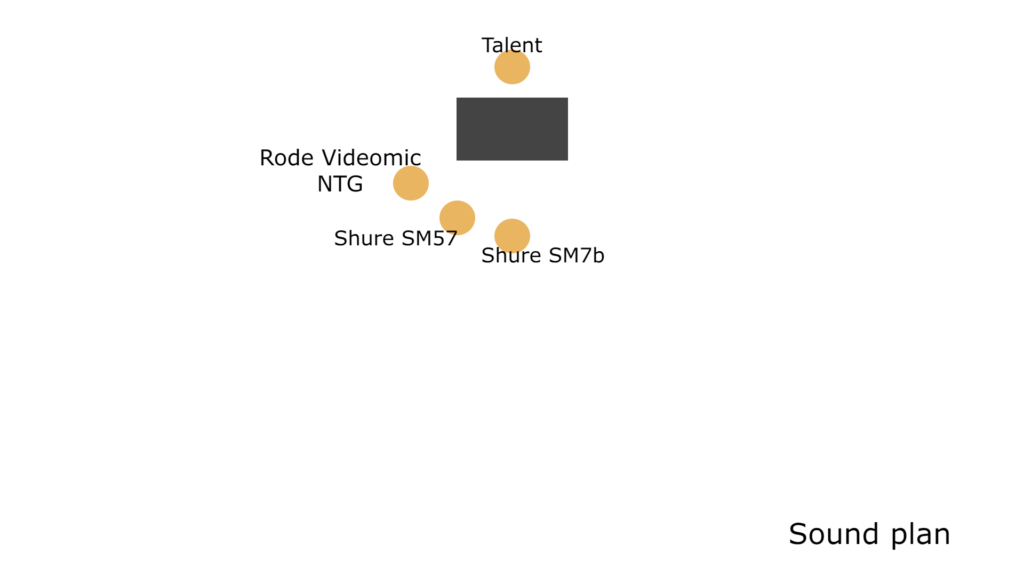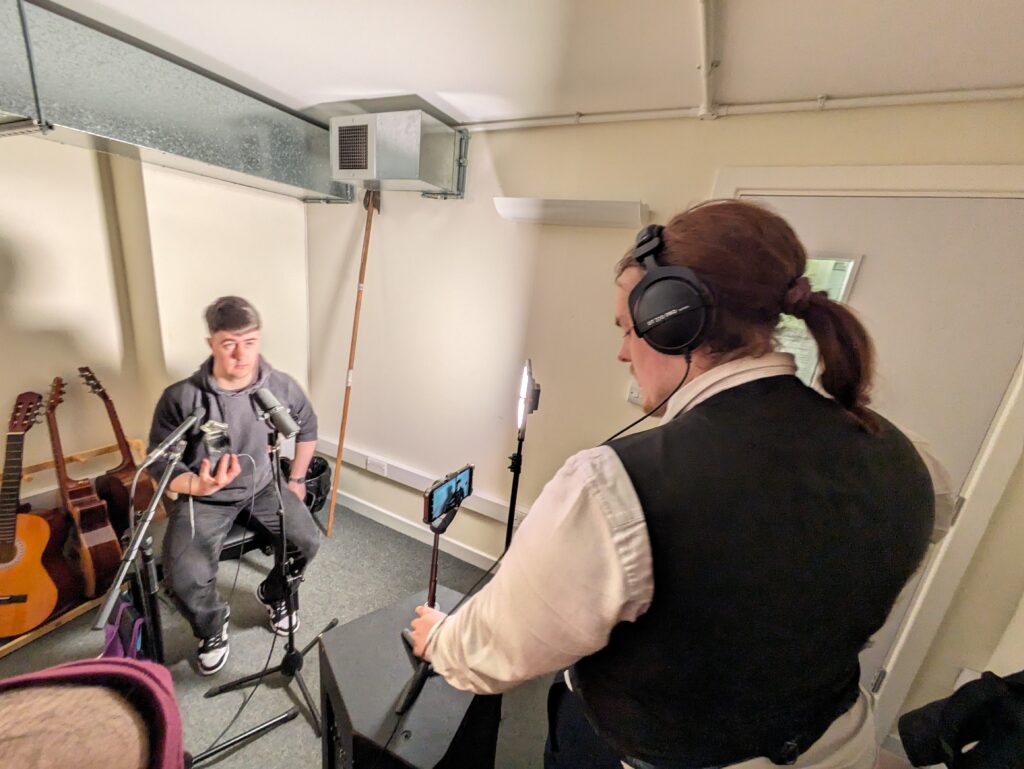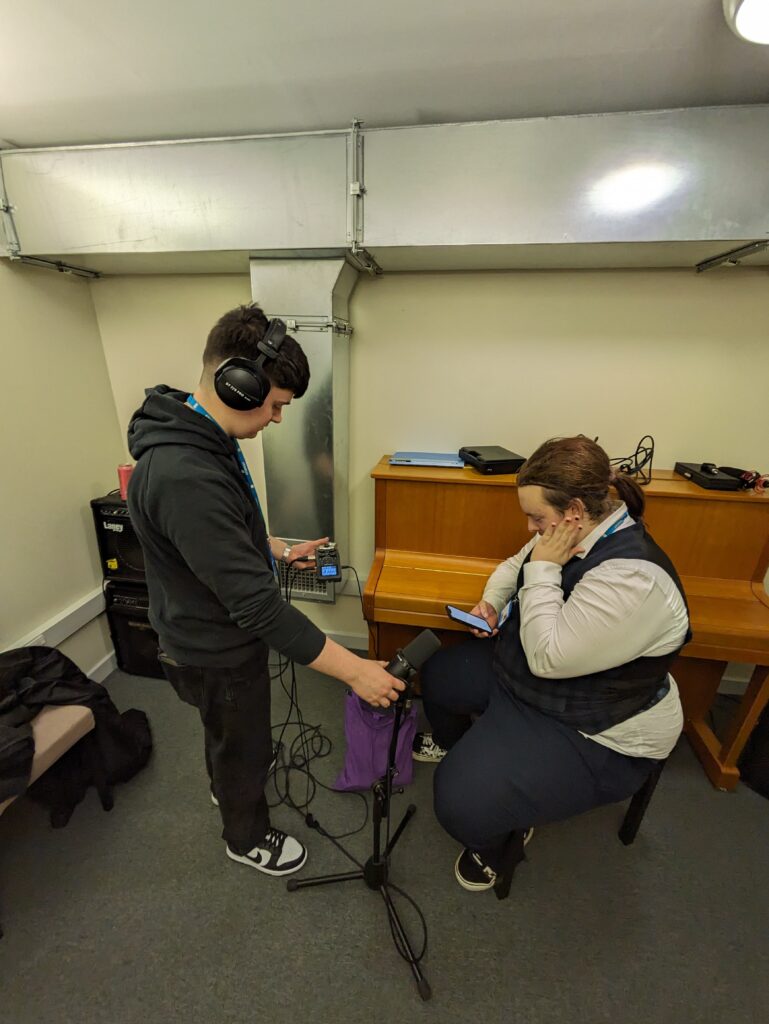What are the different microphones?
- Dynamic Microphones
Dynamic microphones are usually used for ADR (Automated Dialogue Replacement), for animated work. They are best utilized in a treated setting, a studio room for podcasting and general voice work. This is because most Dynamic mics have a medium frequency pickup range, human voices fall in the medium frequency range, this blocks out most high and low frequency noises. (Gula, D. 2020)
- Condenser Microphones
Due to having a low noise floor, condenser mics are excellent for the post production process of foley capture. Condenser microphones are vert sensitive to noises and are amazing at capturing even the smallest of sounds, due to typically having wider frequency ranges.
Condenser microphones are best used for studio recording, for picking up vocals. Due to their very particular noise range pick up, these types of microphones have very impressive off axis noise rejection. These mics work particularly well for music recording sessions due to having a wave frequency response. Meaning, condenser mics can clearly pick up the wide range of instruments used in a recording session. (Leonrad, R. 2022)
- Shotgun/boom Microphones
Shotgun microphones can be both condenser and dynamic. Shotgun microphones are very directional. These types of mics are especially good at picking up very fine, detailed sound; Examples would include, ambient street noise.
- Lavaliere/Lapel Microphones
Lavaliere or Lapel Microphones are very small dynamic microphones the attach via a small clip or tape, they are best for capturing great audio quality while hiding the microphone on the talent.
Why would you use different microphones
Some scenarios in which different types of microphones would be required would include:
- Documentary style shoot
- Nature shoot
- Interview
- Filming in a untreated room
- Filming in loud environment
You would use different types of microphones depending on many variables, there isn’t one microphone type that is better than another. Variables typically range from the size of the filming space to how well the space is sound treated.
A sound treated space is a room solely designed for audio recording. These rooms are equipped with thick sound insulated walls along with acoustic panelling covering them for extra sound absorption. (acoustiblok, 2020a)
For example, if you are in treated room, a dedicated space for voice recording and sound capture, you would more than likely find yourself in front of a condenser microphone. Condenser microphones are typical used for a studio setting, as they have wide frequency range which allows them to pick up fine detail and intricacies.
Dynamic microphones on the other hand, are best suited for live concert settings (Teach me audio, 2020). They are built for more physical use cases, being built more structurally sound and rugged. Dynamic microphones usually have a cardioid pickup pattern, this means that they have great off axis rejection.
Different Audio Scenarios
The first example of a different audio scenario would be working in a sound treated space, rooms like a sound booth or a voice over booth would be the most desirable places for audio pickup and sound gathering. Those types of spaces are built with the express purpose of sound capture.
Rooms and spaces like a sound booth have thick sound insulation installed in the walls and have sound dampening pads, all across the walls to help dampen any echo and reverb. (acoustiblok, 2020b)
Another example of a different audio scenario would be working in the TV Studio. The Studio room not being treated for sound and being a larger space, leaves audio sounding echoey and distant. The audio is helped to a light degree by the thick curtains and the carpeted floor, both helping to soften the echo and any reverberation.
The Microphone used in the TV Studio is the Sennheiser e 845. The microphone used has a super cardioid pickup pattern, meaning that the microphone has exceptional off-axis rejection, prioritizing the noise in front of it. The best place to have the microphone would be directly in front of the talent.
What we planned
As a team Jake, Ash and I planned to produce a microphone test video; to explain each microphone and their best use cases. The audio equipment used as seen listed below:
Audio Equipment List
- Headphone – beyerdynamic DT770 pro
- Microphones – Iphone Microphone, Shure SM7b, Audio-Technica A4041, Zoom handy recorder h6, Rode Videomic NTG, Google Pixel 7a microphone
We used the A30 practice room for filming. The room was primarily used for sound recordings and rehearsal practice a30 also featured good noise dampening.
Evidence of Preproduction



Final Product
Reflection
The recording space we used had a few issues, one example being while recording the video, noises from another groups practice session could be heard. Part of the other groups rehearsal was picked up slightly on the Zoom Handy recorder h6. These issues could have been alleviated with the use of some more sound treatment, having sound proofing panels on the walls and ceiling. Additionally, we could have brought in thick blankets to help cushion and isolate our sound recording, another way to help the audio would to have used a pop filter, to help minimize and soften harsh spikes in audio, this can be heard in our recordings.
Bibliography
acoustiblok (2020) Acoustic Treatment – A Complete Guide. Available at: https://www.acoustiblok.co.uk/acoustic-treatment-a-complete-guide/ (Accessed at: 13/04/2024)
Gula, D. (2020). 4 Types Of Microphones For Filmmaking And Vlogging [2020 Edition]. [online] www.soundstripe.com. Available at: https://www.soundstripe.com/blogs/4-types-of-microphones-for-filmmaking-and-vlogging (Accessed at: 11/04/2024)
Leonrad, R. (2022) Shotgun Gun Mics Vs Dynamic (RODE NTG-1 Vs Audio-Technica AT2040). YouTube. Available at: https://www.youtube.com/watch?v=c0-j6Cb-ay4 (Accessed at: 13/05/2024)
Masterclass (2021) What Is a Condenser Microphone? How Condenser Mics Work. Available at: https://www.masterclass.com/articles/what-is-a-condenser-microphone (Accessed at: 28/04/2024)
Teach me audio (2020) Dynamic Microphones. Available at: https://www.teachmeaudio.com/recording/microphones/dynamic-microphone (Accessed at: 28/04/2024)
